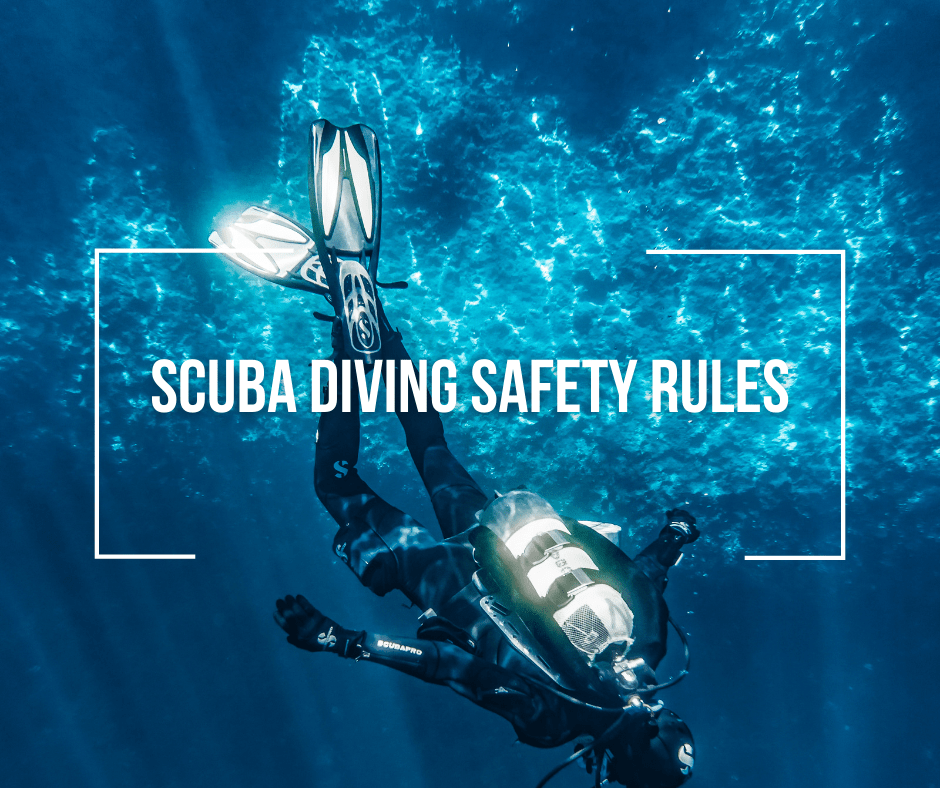SCUBA Diving Safety Rules
Jonathan Bonano March 16th, 2021 Posted In: Articles Tags: SCUBA
SCUBA Diving Safety Rules
As with any extreme sport, you need to understand the basic safety precautions to have the most enjoyable experience possible. In this article, I’ll touch on some of the basics of SCUBA diving safety rules, and some instincts you’ll pick up through experience as your diving career continues.
First Things First
Whenever scheduling a dive, ALWAYS know your capabilities before trying something new. Of course, a cave or a wreck dive sounds thrilling, but learning you have claustrophobia under the water is not the best place for this kind of introspection. A current dive can also be incredibly fun, but without proper training, you can risk the life of yourself or others if you don’t have the necessary skills.
Also, if you’re traveling for the dive, remember that there’s no flying up to 24 hours after you’ve finished your last dive! Nitrogen, which is the prime culprit in “getting the bends,” needs this time to safely evacuate your system. The most seasoned divers can forget about this.
 SCUBA Gear
SCUBA Gear
Your gear is your most important asset while exploring the deep blue. For this reason, as soon as you get into the water you ALWAYS perform a buddy check and a personal check to make sure everything is in order. One of the several things you’ll inspect is that there shouldn’t be air trickling out of the tank. Once emerged, bubbles will stream out of the tank if anything is amiss, and you or your diving guide can take care of the problem. While you go through your dive, you should always be checking your gauges to make sure you have an adequate air supply for your dive.
Another important part of SCUBA Diving Safety 101 is that your mask should fit perfectly. Overtightening your mask is a beginner’s mistake. The thought process makes sense: “If I tighten the mask completely, no water will get in.” Albeit true, if your mask is too tight though, it can constrict sinus cavities around your face which will make it impossible to equalize and give you a pounding headache.
Are you wearing your wetsuit? That’s another key piece of your SCUBA gear so you can be warm and protected!
Once your buddy and gear check is complete and everything is in order, let’s get to some underwater diving safety.
Under the Surface
As you are floating down to your desired depth, a comfortable equalizing is imperative. For those who don’t know, equalizing is matching your body’s internal pressure with the surrounding water’s pressure. This is easily done if done correctly with the right techniques so don’t feel overwhelmed. You never want to “force” your body to equalize. This can lead to many complications, one of the worst ones being Tinnitus. If you feel yourself not being able to equalize comfortably, just swim a little towards the surface where the water pressure is lower and try it again. Nine times out of ten this will fix the problem and you can go on your merry way.
When I was working as a Dive Master in Colombia, I would joke with my diving customers to “make sure to keep your hands and feet inside the ride at all times.” People’s first instinct once underwater is to try and steady themselves with their arms and moving their legs wildly. Flailing about is an incredibly inefficient way to dive. Having proper control of your fins and using your head to guide your path will keep you safe from harm’s way. You don’t want to accidentally brush your hand against some fire coral or touch an unsuspecting lionfish now, do you? Keep those arms tucked in and move those legs with grace.
SCUBA Diving Safety Rules Continued
Another important diving safety rule, which will undoubtedly be mentioned in your dive classes but won’t hurt being mentioned again, concerns what to do if you lose your regulator. Your regulator can go missing for several reasons: sometimes you might be closer to a rock than expected, or you’re diving with someone who hasn’t read this article and is flailing their hands around!
In this unlikely event, you want to trickle a little bit of air out of your mouth while you find your regulator. If you hold your breath, as humans are wont to do, your lungs will expand and contract drastically as the water pressure changes around you. This slight trickle of air will keep your lungs in equilibrium, and more importantly, keep you from a serious medical emergency.
The last thing you’ll complete underwater before heading to the surface is known as a “Safety Stop.” A Safety Stop is when you stay at a depth of 5 meters for 3 minutes. A very elementary explanation of this is because you want the nitrogen in your body to safely escape while still under some water pressure. Most importantly, this prevents the infamous situation known as “getting the bends.”
With these few skills in mind, nothing is more important with regard to SCUBA diving safety than keeping calm underwater. Becoming stressed in an extreme environment will cause much more harm than good. Stress can cause you to use more air than expected, and act irrationally. Remember to always check your gauges to know how much air you have left. Always keep your composure if something unexpected arises. And always remember to work WITH the water, not against it.

